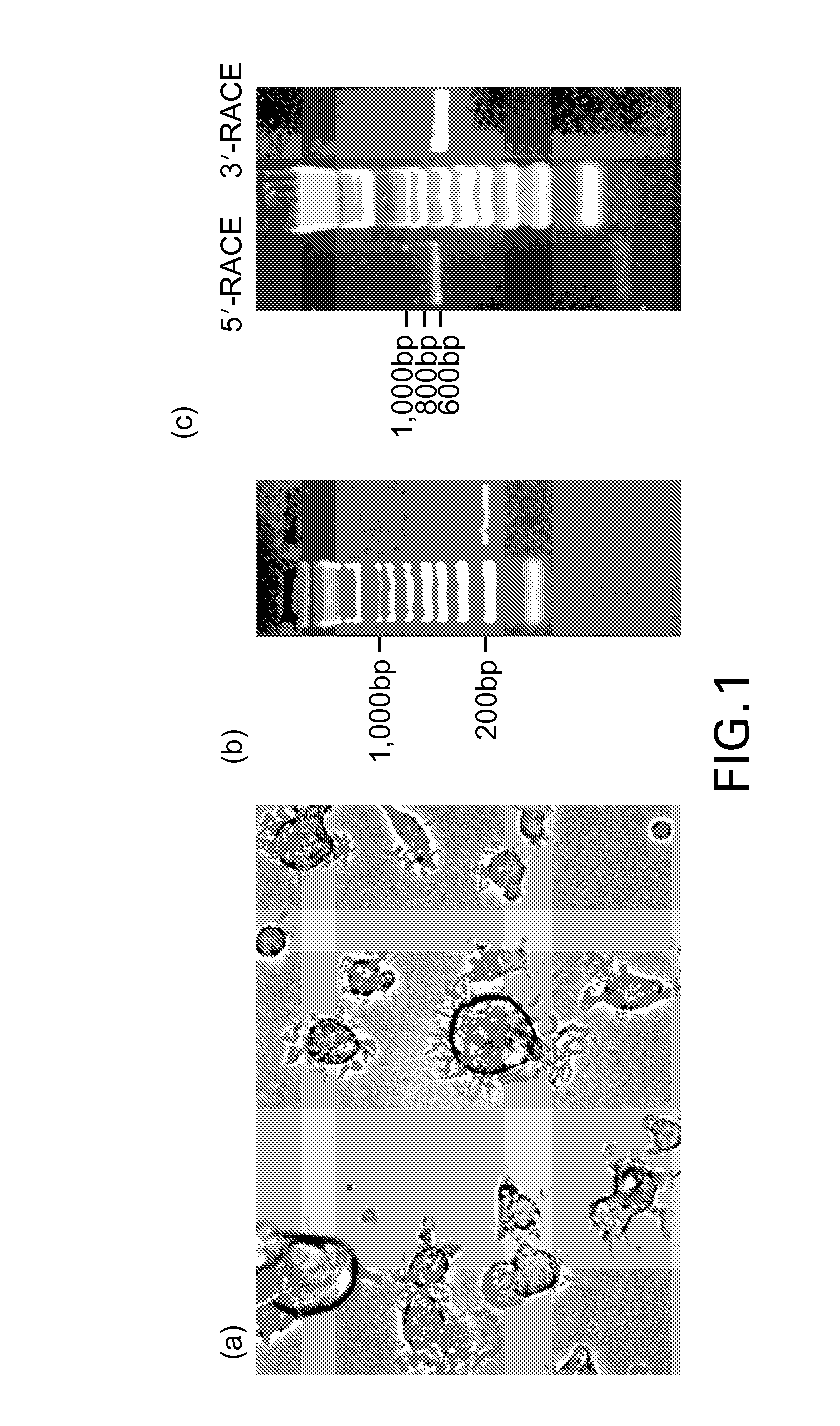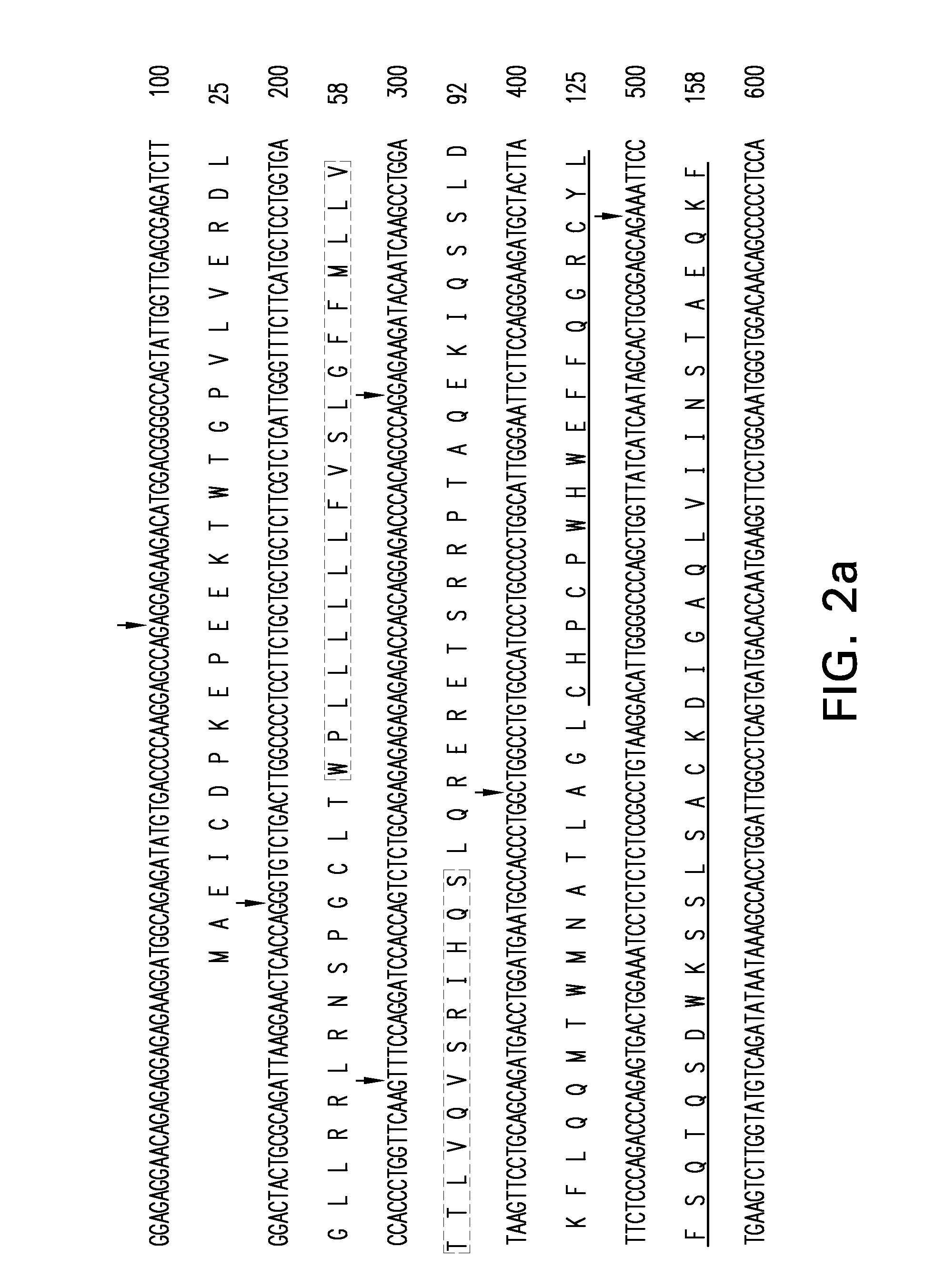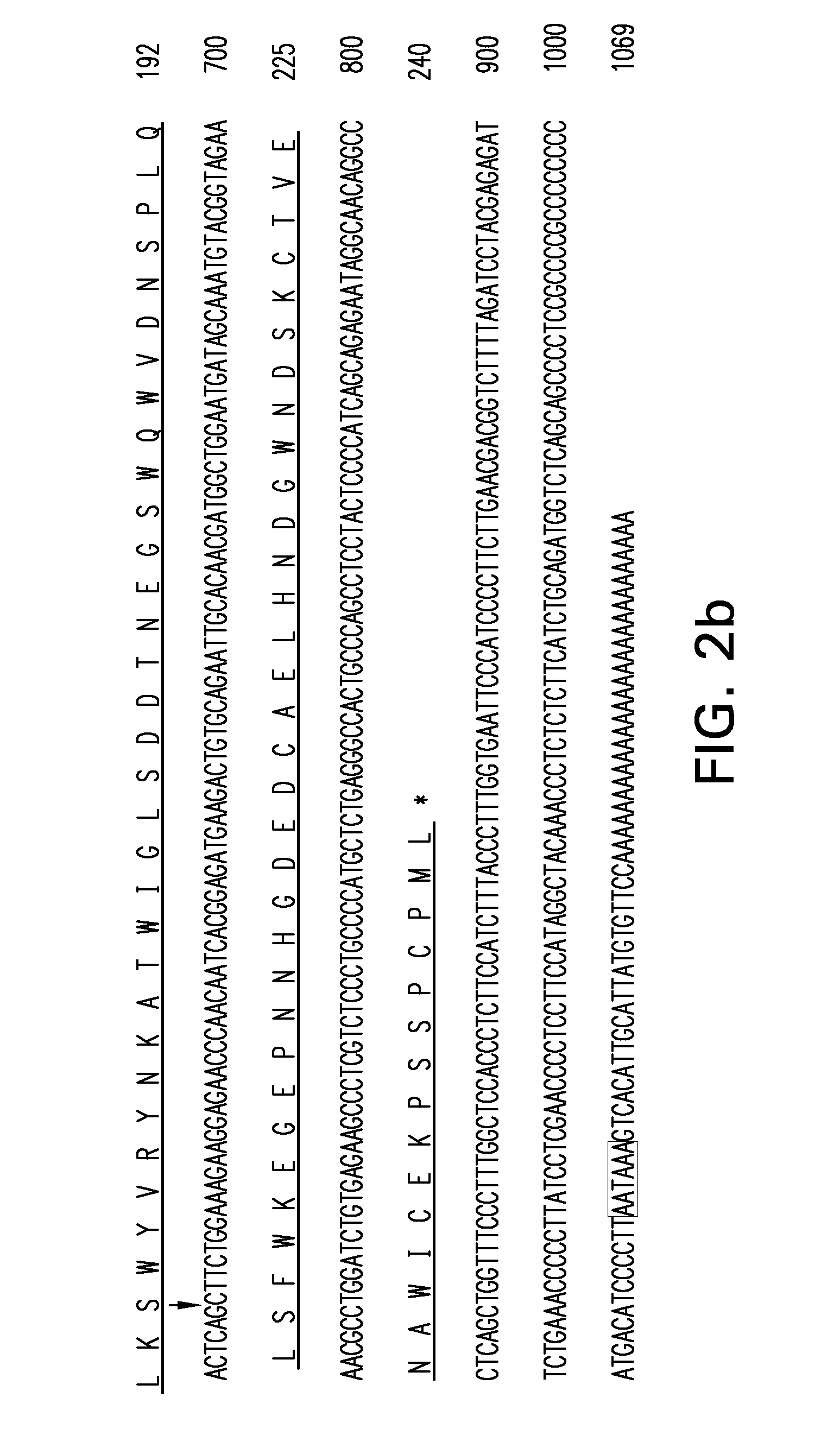Porcine DC-SIGN, ICAM-3 and LSECtin and uses thereof
a technology of icam-3 and lsectin, which is applied in the field of porcine dcsign and porcine lsectin genes, can solve the problems of severe reproductive diseases in pregnant sows, the potential interaction between prrsv and porcine prrs on apcs has not yet been reported, and the pprsv receptor on susceptible monkey kidney cells has not yet been identified. to achieve the effect of enhancing the immunogenic activity of poor antigenic substances
- Summary
- Abstract
- Description
- Claims
- Application Information
AI Technical Summary
Benefits of technology
Problems solved by technology
Method used
Image
Examples
example 1
Cloning and Characterization of Porcine DC-SIGN cDNA and Gene
Materials and Methods
[0114]Pigs: Venous blood samples and porcine alveolar macrophages (PAM) were collected from healthy crossbred conventional pigs of 3 to 7 weeks of age. Pigs were maintained in an isolated room under experimental conditions.[0115]Isolation and culture of porcine alveolar macrophages, porcine peripheral blood lymphocytes, monocytes, monocyte-derived dendritic cells and monocyte-derived macrophages: Porcine alveolar macrophages (PAM) were collected by lung lavage using cold PBS and resuspended in DMEM supplemented with 10% fetal bovine serum (FBS). Fresh or 3-day in vitro cultured PAM cultures were used for staining and subsequent analysis.
[0116]Porcine heparinized blood was diluted 1:2 with phosphate-buffered saline (PBS) and centrifuged over Ficoll-Paque PREMIUM (GE Healthcare, Sweden) at 1000 g for 40 min at room temperature. The buffy coat layer containing peripheral blood mononuclear cells (PBMC) was...
example 2
Generation of a Stable Cell Line Expressing Porcine DC-SIGN
Materials and Methods
[0141]Construction of a bicistronic expression vector harboring porcine DC-SIGN: The complete coding region (723 bp) of pDC-SIGN was amplified by PCR using primers Nco-DCS-5 (5′-ATACCATGGCAGAGATATG-3′ (which corresponds to SEQ ID NO:25)) and Xho-DCS-3 (5′-AGTCTCGAGTCAGAGCATGGGGCAGGGAGA-3′ (which corresponds to SEQ ID NO:26)) and subsequently cloned into a bicistronic expression vector pTriEx-1.1 Neo vector (commercially available from Novagen, Madison, Wis.) (the sequence and map of the pTriEx-1.1 Neo vector are shown at www.emdbiosciences.com / docs / docs / PROT / TB293.pdf) downstream of a hybrid promoter composed of the CMV immediate early enhancer fused to the chicken beta-actin promoter using Nco I and Xho I restriction sites. The construct, designated “pTriEx-PDCS,” was sequenced to verify the identity and determined to be 7243 by in length (includes the backbone vector pTriEx-1.1 Neo (6664 bp) plus the i...
example 3
Involvement of Porcine DC-SIGN on Transmission of or Infection by Porcine Reproductive and Respiratory Syndrome Virus (PRRSV)
Materials and Methods
[0149]Generation of PRRSV virus stocks: Two PRRSV strains from different genotypes were used in this study. The virus stocks of genotype 1 PRRSV expressing green fluorescent protein (GFP), designated “PGXG” for purposes of this study, was generated by transfection of MARC-145 cells capable of supporting PRRSV infection with a PRRSV infectious cDNA clone (a gift of Dr. Ying Fang, South Dakota State University). The infectious PRRSV cDNA clone was modified to be DNA-launched with much higher efficiency followed by two serial passages on MARC-145 cells. The virus stocks were PRRSV-containing supernatants without cell debris, which was removed by centrifugation. The virus titers of PGXG and a genotype 2 North American PRRSV strain VR2385 kept under storage conditions were determined by limiting dilution on MARC-145 cells through IFA and quanti...
PUM
| Property | Measurement | Unit |
|---|---|---|
| temperature | aaaaa | aaaaa |
| temperature | aaaaa | aaaaa |
| volume | aaaaa | aaaaa |
Abstract
Description
Claims
Application Information
 Login to View More
Login to View More - R&D
- Intellectual Property
- Life Sciences
- Materials
- Tech Scout
- Unparalleled Data Quality
- Higher Quality Content
- 60% Fewer Hallucinations
Browse by: Latest US Patents, China's latest patents, Technical Efficacy Thesaurus, Application Domain, Technology Topic, Popular Technical Reports.
© 2025 PatSnap. All rights reserved.Legal|Privacy policy|Modern Slavery Act Transparency Statement|Sitemap|About US| Contact US: help@patsnap.com



